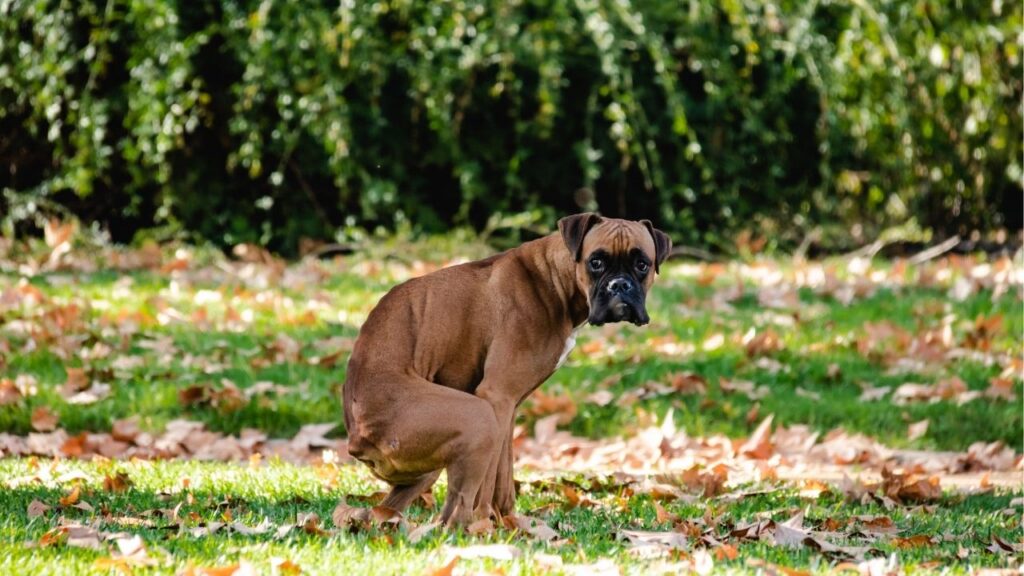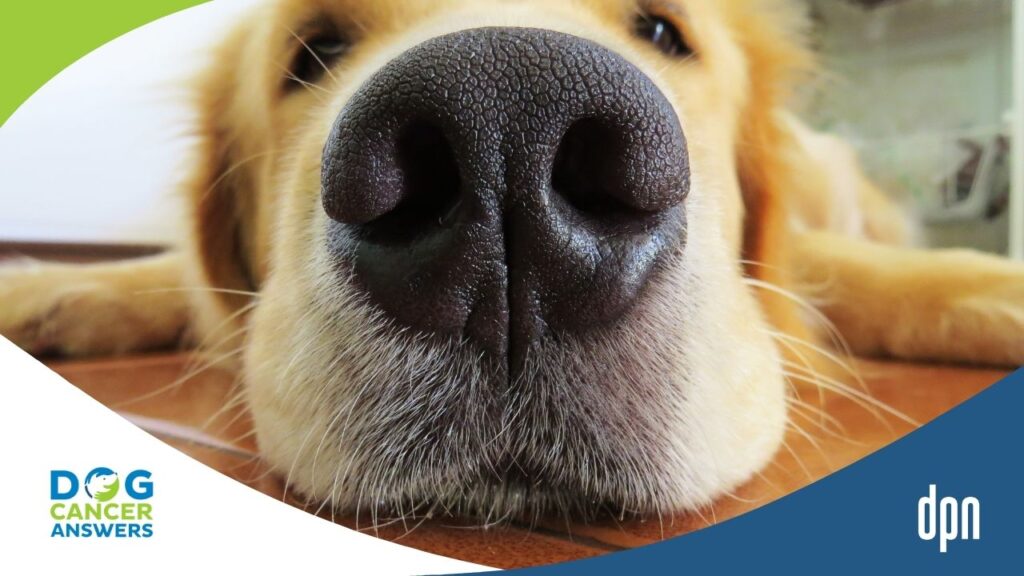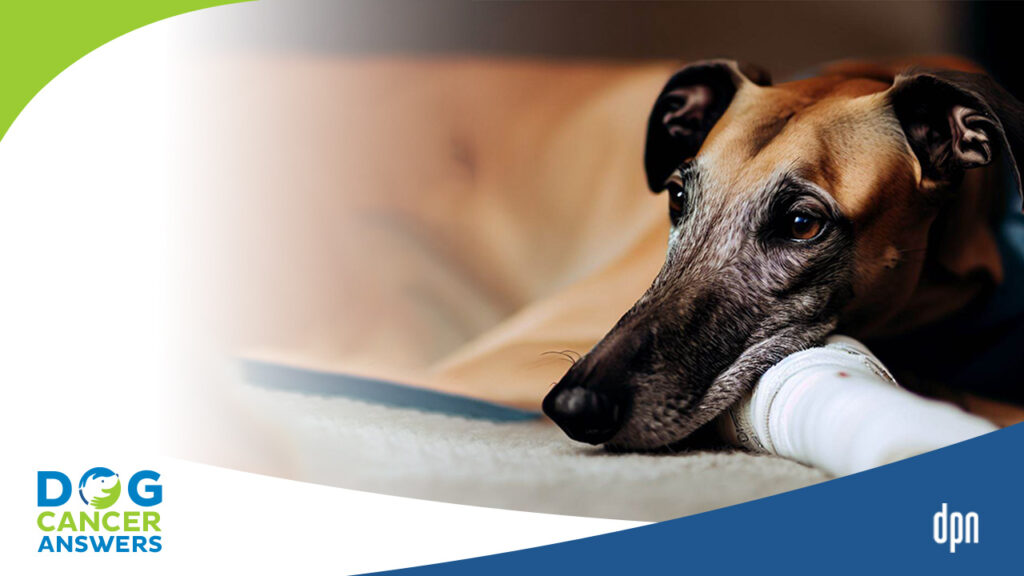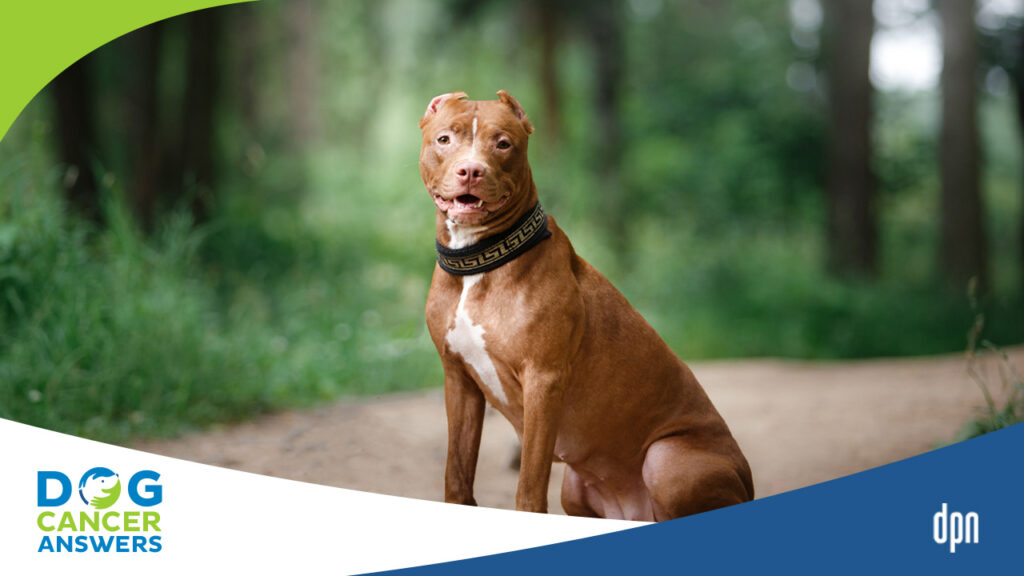EPISODE 144 | RELEASED December 6, 2021
Dog Has Bloody Poop: Should I Call My Vet? | Dr. Nancy Reese Deep Dive
Bloody poop is scary! Dr. Nancy Reese weighs in on potential causes, when to be concerned, and what you can do to help your pup at home.
SHOW NOTES
The only thing worse than your dog having diarrhea is your dog having bloody diarrhea. Nasty! The good news is, one episode of bloody stool is not usually anything to worry about, and cancer is not a common cause.
If your dog’s stool has blood in it or is black (a sign of bleeding in the stomach or small intestines), let your vet know. If it only happens once your dog may not need treatment, but this way your vet can put a note in your dog’s record about when these things happen.
Bloody stool is a concern if:
- It happens multiple times
- There is a lot of blood
- The dog strains to poop
- The dog is also vomiting
- The dog is acting ill or painful
All of these cases benefit from a veterinary exam and a fecal sample analysis to look for parasites and other abnormalities.
Tune in for more of the causes of bloody stool, plus what you and your vet can do about it.
[00:00:00] >> James Jacobson: Today’s show is sponsored by the Dog Cancer Survival Guide, the best-selling book that helps you help your dog with cancer. Join the companion private support group at DogCancerSupport.com and get the email newsletter at DogCancerNews.com.
[00:00:18] >> Dr. Nancy Reese: It’s not an uncommon thing for any dog to get a little bit of blood in their stool.
But if there’s other signs that go along with it – so if they’re vomiting and they have the bloody stool, that’s a bigger concern. If they’re uncomfortable and they’ve got the bloody stool. If their gum color – we always use gum color as a really big warning sign – if they look like their gums by their teeth, they’re, if they’re normally bright pink and that animal is looking pale white or bluish, then that bloody stool becomes a much more significant finding than it might in a young puppy who’s running around eating trash.
[00:00:54] >> Announcer: Welcome to Dog Cancer Answers where we help you help your dog with cancer. Here’s your host, James Jacobson.
[00:01:02] >> James Jacobson: Hello friend, and welcome to Dog Cancer Answers. Today’s topic is not for the squeamish, but it is one that many dog owners have encountered. And that is bloody stool.
So gross, I know. Hopefully you’ll never have to deal with this nasty mess, but if you do, just in case, we have consulted with Dr. Nancy Reese, a practicing veterinarian for over 30 years, who has a Master’s degree in Preventative Veterinary Medicine and a PhD in Epidemiology. Joining us once again, thank you, Nancy. Thanks for being with us.
[00:01:41] >> Dr. Nancy Reese: Thank you once again. It’s nice to see you again.
[00:01:44] >> James Jacobson: It’s great to have you back on the air. So let’s turn our attention today to something that we don’t like to talk about a lot, but bloody poop, especially bloody diarrhea. It’s really, really upsetting. Why, why should I not panic? Or should I panic, when I see that coming out of my dog’s rear end?
[00:02:04] >> Dr. Nancy Reese: That’s, I like the way you put that: when should I panic, or should I not panic? One of the first things I would say is that dogs do seem to get blood in their stool way more frequently than people do. So one episode of some blood in the stool, I tend not to worry about quite as much. That being said, when there’s bloody diarrhea all over your house, it becomes a bigger emergency, both for the dog’s sake as well as, you know, protecting your carpet.
[00:02:36] >> James Jacobson: So, I mean, is it, is it, is it a good practice when you’re outside using those poop bags, to kind of really, you know, do a quick, quick, quick, quick evaluation of, of it? Is it firm? Is it solid or is it kind of diarrhea-ish, or is it, you know, diarrhea with pools of a little blood and mucus on it?
[00:02:53] >> Dr. Nancy Reese: Absolutely. Monitoring, for lack of a better, um, topic or whatever, monitoring stool quality can be tremendously helpful, and I am so overly impressed that we have some people that can tell you: my dog poops twice a day, they’re this big, they’re this color, this quality, or this, you know, softness. And it’s super helpful to know that what they’re seeing, if they see that bloody stool, is so dramatically different from the normal.
[00:03:26] >> James Jacobson: I’m guilty of that, I guess that would be more of a scatology thing, but I’m guilty of that because I really do care.
[00:03:30] >> Dr. Nancy Reese: Well that, that’s great. Because it’s so much more information than when we get the other extreme where people say, I don’t know, he goes out in the woods and I don’t see him. So we have no idea if this has been going on for six weeks and the owner finally caught it, or if this was truly a sudden change. And so being able to monitor with the poop bags and things is absolutely a wonderful thing to do. With that, a little bit of blood on the exterior of the stool is quite a different situation from a mushy blood clots, you know, coming out with the stool. So the amount of blood makes a huge difference on that panic level.
[00:04:10] >> James Jacobson: And so when should you call the vet when you see some blood in the stool?
[00:04:15] >> Dr. Nancy Reese: So it’s nice, again, from my personal point of view, the more information is always better.
So I love it if people call and say, "I found my dog’s stool this morning, the first time, and there’s a little bit of blood on it." I love to be able to have that information recorded in their chart and then tell them, okay, one time blood, a little bit, there was no straining, the dog feels great, eating, no vomiting – I tell them usually, keep an eye on it. If it continues, then we’ll start to panic.
[00:04:46] >> James Jacobson: You’re the best vet ever, I’m gonna – I can only imagine if I call my vet every time that I see that once. But you, so you really do appreciate that. I mean, that, that’s the information that you chart.
[00:04:55] >> Dr. Nancy Reese: I absolutely do.. Now. I will say the front staff might have a little harder time with that because they’re the ones that are getting these excessive phone calls, but the number of times that I have looked back in a record and said, oh, you reported this happening three weeks ago, and last year at the exact same time of year, you reported that also. So for me, that information is invaluable. And, you know, sometimes – although email’s not necessarily a great way to communicate because it’s harder to keep in touch on emergency basis – but I also provide people with an email address so if they want to give me an update on their animal that is not emergency related, again, I can take that note, put it in the chart, and I love having that information. So to me, the, the more, the merrier.
[00:05:38] >> James Jacobson: Do people snap pictures?
[00:05:40] >> Dr. Nancy Reese: Yes. And it is funny because the number one picture that I get from people is usually about poop.
[00:05:50] >> James Jacobson: I love that. Okay. Okay. So, but in general, if you don’t have as, um, diligent a veterinarian as you are, when should you call your vet or bring your dog in when you see blood in the stool?
[00:06:05] >> Dr. Nancy Reese: So if there’s a significant amount. So if you’re seeing, you know, 20% of the stool covered – and that’s just a rough number – but if you’re seeing like a large pool of blood on that stool or with the stool, that’s certainly a cause of concern.
If it’s little red specks that are on the outside, I don’t worry about that too much. If it’s more than one bowel movement that’s had significant amount of blood, that raises the concern. If there’s vomiting associated with the bloody diarrhea, that usually is a little bit worse. When they start to strain so hard – I mean, it’s really hard to watch some of these poor dogs with diarrhea – but they will sit there and strain so hard that you’ll just start to see pure drops of blood come out. Well that, even if it’s not a life-threatening situation, that’s very uncomfortable for the dog, so that becomes a higher priority case.
[00:06:56] >> James Jacobson: Yeah, I’ve had, I’ve had those eyes, look, my dog looking at me like, this is so hard, you know? And, and, and you just feel, and you feel, I felt for my dog in those situations.
[00:07:06] >> Dr. Nancy Reese: I was going to say that that’s actually a big thing we also see is that we get phone calls a lot where people think the dog is actually constipated because they’re out there straining and straining and not producing something or only usually seeing a little bit of blood. And I’d say the majority of the time the dog actually isn’t constipated, it has just had such diarrhea and has been straining long enough that there’s nothing left to come out.
[00:07:30] >> James Jacobson: Got it. Now, it’s not only red bloody stool that you’re concerned about, but if you start to see other colors, right?
[00:07:38] >> Dr. Nancy Reese: Right, right. So dark black is another definitely concern. That usually if there’s bleeding higher up in the digestive tract, so say in the stomach, if you’ve got a bleeding ulcer, by the time that blood goes all the way through the intestines and out the colon and onto the stool, you’re going to see more of a black color rather than that fresh blood.
And that sometimes is, indicates a slightly worse problem than just the fresh blood on top of the stool. The hardest thing is sometimes a really dark green stool can look black. So sometimes it takes – and this is, you know one of the really joys of the job is people will bring in a stool sample and, yes, with gloves, we will actually, you know, kind of paw through it to try to determine the color.
And there’s some specific tests you can send it out to detect whether it’s blood or just really dark color.
[00:08:29] >> James Jacobson: Okay. So would that also be a thing that like, if you see this black several times, that’s more of an issue, or if you just see it once it may actually be dark green?
[00:08:38] >> Dr. Nancy Reese: Right. Yes. I would say, yeah, you’re going to want to have it be more consistent in terms of whether you worry about it or not.
[00:08:45] >> James Jacobson: And then of course, this is somewhat impacted by maybe what comes out as a function of partly what comes in. So if you’re changing the dog’s diet, that’s when you can start to see these coloration changes and consistency changes in the, in the poop.
[00:09:00] >> Dr. Nancy Reese: Absolutely. I mean, that’s, a classic example is you start to feed your dog carrots and sometimes you actually see a little orange flecks come out. And obviously that’s not going to be a big concern because you know you put carrots in. So you know what comes in definitely does come out differently.
[00:09:16] >> James Jacobson: And perhaps a day or two later, depending on how much fiber’s in it. Let’s pause right here, and we’ll take a quick break and we will be right back.
Welcome back. Obviously we’re talking, on this series, mainly about cancer in general. So which cancers are most likely to cause bloody stool?
[00:09:37] >> Dr. Nancy Reese: Probably, I guess I would say the number one is going to be some type of rectal or colon tumor. That’s going to be something that, where there is a mass growing within the end part of the intestine, and those can cause some bleeding or they can cause squeezing, trying to really get the stool beyond that mass, they can strain so hard that there is blood showing up that might not directly be from the tumor, but from the straining that the tumor causes.
[00:10:05] >> James Jacobson: Other than rectal, what else?
[00:10:07] >> Dr. Nancy Reese: An anal gland tumor or something like that could cause bleeding. So it’s not technically within the stool, but it’s adding the blood on its way out. I think those are probably going to be – a mast cell internally, like if there was a mast cell tumor within the stomach or the intestines, that could cause some potential bleeding.
And then there’s some other stomach cancers that they could get a mass in the stomach that could cause more of that dark bloody type of thing.
[00:10:34] >> James Jacobson: Is bloody diarrhea a common symptom of cancer?
[00:10:37] >> Dr. Nancy Reese: There’s more common causes of bloody diarrhea than cancer.
[00:10:40] >> James Jacobson: So don’t think – this is the horses and zebras thing. Don’t, if you see it, it’s not, well, God, my dog has cancer.
[00:10:46] >> Dr. Nancy Reese: Exactly.
[00:10:47] >> James Jacobson: Yeah. But definitely check it out. So is there anything that you can do at home that might help your dog if he has this?
[00:10:53] >> Dr. Nancy Reese: If it’s something more minor, like you saw the dog get into the trash, and then there was a little bit of bloody diarrhea afterwards, it might be something where, don’t feed them for 24 hours or 12 hours or start a bland diet. Simple bloody diarrhea is, might just be a matter of resting the digestive tract and then getting better. Bleeding tumors – so you’re going to keep seeing blood coming out, and there’s really not a lot you could do at home for that.
[00:11:20] >> James Jacobson: Okay. So if you do see this for a few days and it’s of concern and you bring your dog in to the vet, what is the vet likely to do both in terms of the tests – you know, clearly you talked about the paw test where you determined if it’s black or green, that’s, that must be one of the more favorite tests that you do – but are there other tests, and then how do you treat it?
[00:11:42] >> Dr. Nancy Reese: If the dog still looks pretty bright and alert, or if they’re just a little bit off – I mean, the first thing is to rule out some of the more simple things like certain parasites. We see quite a bit of Giardia in our area, I live in a rural area and there’s lots of water sources and things so Giardia can frequently cause blood in the stool.
So the first thing we might do is send the stool sample out for a Giardia and parasite check. ‘Cause you find that, great, you treat it and everything’s, everything’s good. And that does bring up another point that, when you do see bloody stool or bloody diarrhea, it’s not pleasant, but if you can bring in a sample, that’s always helpful because trying to collect one at the clinic is not always the easiest thing to do.
So first thing would be to send the stool out, check for parasites, eliminate that. After that there might be some blood work to make sure that they’re not having a bleeding disorder that could cause it – so something like rat poison, that could possibly cause, or at least the older types of Warfarin based rat poisons, that can do it.
Or if they have a clotting abnormality, like they have a platelet disorder – and cancer could cause that as a side effect as well. So there might be some blood tests, there could be stool tests, and then finally there could be some imaging tests where either there’s x-rays with some dye material or an ultrasound to look for ulcerative types of things or cancers, unfortunately.
[00:13:08] >> James Jacobson: You mentioned, you know, bringing a stool sample in versus going to the vet and waiting for that to happen, which can be complicated. How fresh does your sample need to be? And should it be like refrigerated, if it’s hotter? These are the probing questions that I ask.
[00:13:22] >> Dr. Nancy Reese: Yes. Probing questions, I like that. Uh, the fresher the better. So if you just find it, you know, a plastic baggie works very well. Double plastic bags is even better. And if it has to be overnight, if it’s, particularly if it’s hot, I mean, if it’s hot, I’m sorry, but baked bloody stool is not the most pleasant thing to smell. So if you can put it in the refrigerator, if it’s going to be several hours, that will mostly cut down on the odor and it does actually help preserve parasite checks a little bit better, but the fresher, the better. Two day old stool is definitely not going to be very useful.
[00:13:56] >> James Jacobson: Okay. What else do we need to understand about bloody stools?
[00:14:00] >> Dr. Nancy Reese: I guess one of the other big things is, again, it’s not an uncommon thing for any dog to get a little bit of blood in their stool. But if there’s other signs that go along with it – so if they’re vomiting and they have the bloody stool, that’s a bigger concern.
If they’re uncomfortable and they’ve got the bloody stool. If their gum color – we always use gum color as a really big warning sign – if they look like their gums by their teeth, they’re, if they’re normally bright pink and that animal is looking pale white or bluish, then that bloody stool becomes a much more significant finding than it might in a young puppy who’s running around eating trash.
[00:14:39] >> James Jacobson: Dr. Nancy Reese, you gave us all the poop on bloody poop. Thank you so much for being with us today.
[00:14:45] >> Dr. Nancy Reese: Alright. And I hope you don’t have too many opportunities to experience the bloody poop.
[00:14:49] >> James Jacobson: Let’s keep our fingers crossed. Dr. Nancy, thank you. And thank you listener. Thank you for tuning in today, and I want to encourage you to follow Dog Cancer Answers in your favorite podcast app, and also remind you that you can ask Dr. Nancy or one of our other veterinary experts about your questions related to dog cancer. And you can do that by calling our Listener Line. We have a 24 hour a day, seven day a week telephone number where you can call and leave a message. That number is (808) 868-3200 and just leave a question for one of our veterinarians and we will include it perhaps on a future episode of Dog Cancer Answers. If you have a dog with cancer – and why else would you be listening to this show? – I want to encourage you to join our support group, and you can find that at DogCancerSuport.com. Type that into your browser, and it will redirect you to our free dog cancer support private group on Facebook, that’s at DogCancerSupport.com. We also have a newsletter that you should know about. You can subscribe, it is free just like the support group, and you can find that at DogCancerNews.com. All the show notes for today and all the past episodes of Dog Cancer Answers are available on our website at DogCancerAnswers.com.
Again, I want to thank you for hitting the play button today. I’m James Jacobson, and from all of us here at Dog Podcast Network, I want to wish you and your dog, a very warm, Aloha.
[00:16:30] >> Announcer: Thank you for listening to Dog Cancer Answers. If you’d like to connect, please visit our website at DogCancerAnswers.com, or call our Listener Line at (808) 868-3200. And here’s a friendly reminder that you probably already know: this podcast is provided for informational and educational purposes only.
It’s not meant to take the place of the advice you receive from your dog’s veterinarian. Only veterinarians who examine your dog can give you veterinary advice or diagnose your dog’s medical condition. Your reliance on the information you hear on this podcast is solely at your own risk. If your dog has a specific health problem, contact your veterinarian.
Also, please keep in mind that veterinary information can change rapidly. Therefore, some information may be out of date. Dog Cancer Answers is a presentation of Maui Media in association with Dog Podcast Network.
Hosted By
SUBSCRIBE ON YOUR FAVORITE PLATFORM
Topics
Editor's Picks
CATEGORY








